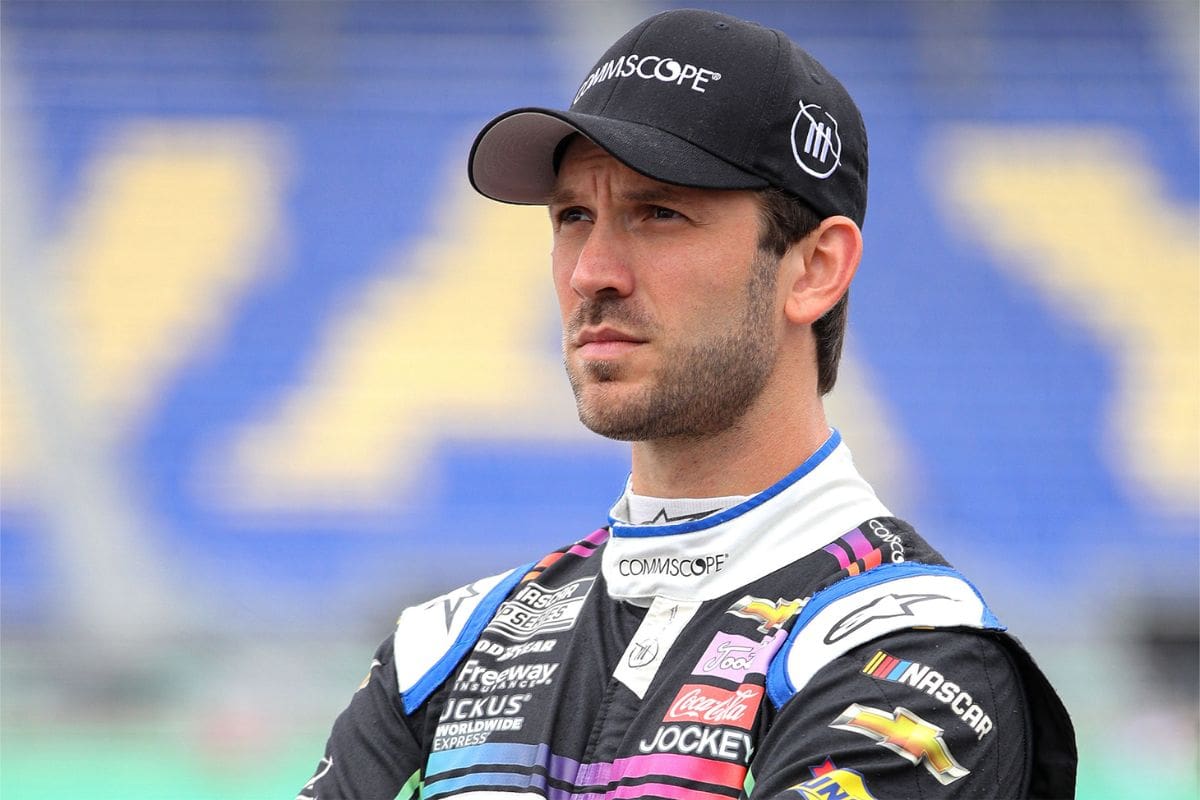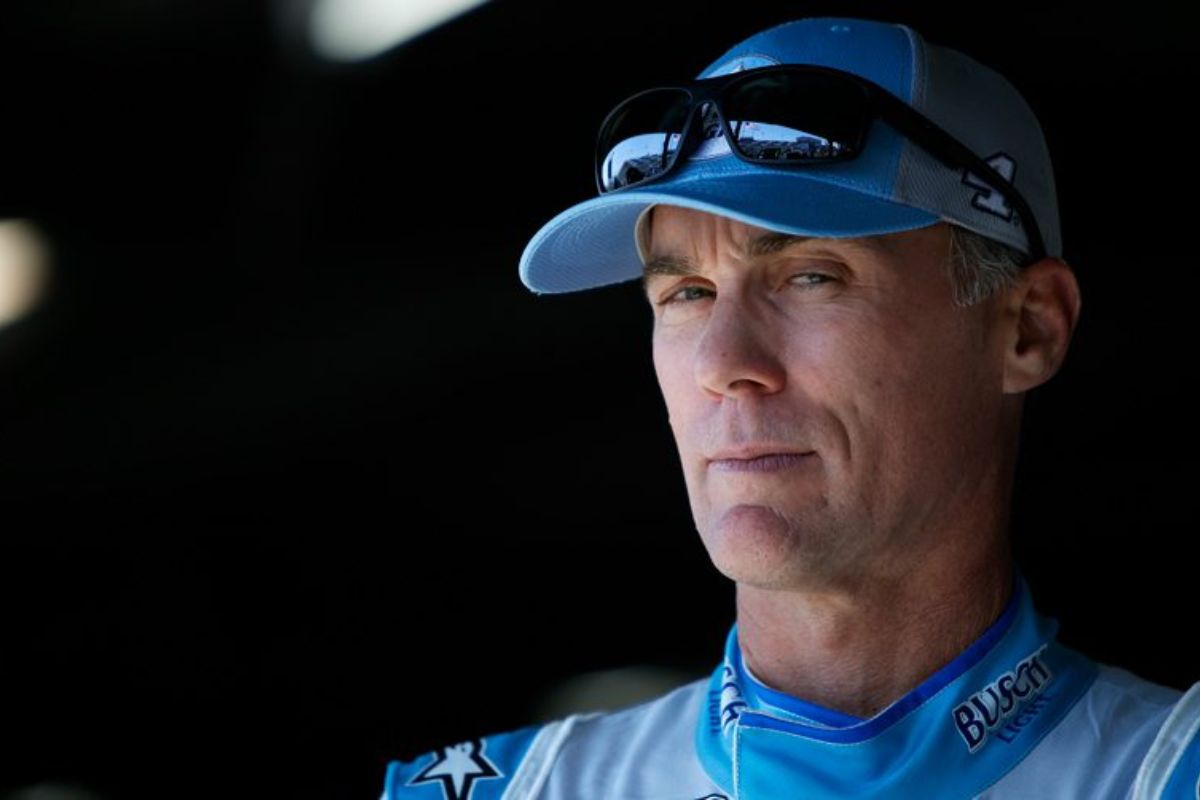Kevin Harvick Urges NASCAR to Investigate Daniel Suarez’s Terrifying Fire: The recent fire incident involving Daniel Suarez at Daytona has reignited critical discussions regarding fire safety protocols within NASCAR. Kevin Harvick‘s call for a thorough investigation emphasizes the pressing need to reassess the materials and safety measures employed in race car design. His concerns highlight a broader issue of driver safety and the potential risks posed by non-retardant materials. As the NASCAR community grapples with these discoveries, the question arises: what specific changes could be implemented to improve safety and prevent similar incidents in the future?
Key Highlights
- Kevin Harvick called for a thorough investigation into the fire safety protocols following Daniel Suarez’s car fire at Daytona.
- The incident highlighted significant vulnerabilities in NASCAR vehicles, particularly in fire safety measures.
- Harvick emphasized the need to review and improve fire retardant properties in materials used for race cars.
- He urged NASCAR’s Research and Development teams to lead the examination of materials for burn rates and flashpoints.
- The racing community is advocating for proactive measures to enhance fire safety standards to prevent future incidents.
Incident Overview: Suarez’s Car Fire
The harrowing incident involving Daniel Suarez’s car fire during the recent NASCAR race at Daytona highlights critical safety concerns within the sport. This alarming event unfolded when Denny Hamlin unexpectedly halted on the track, leading to a noteworthy fuel spill. As Suarez navigated the chaotic scene, the ignited fuel transformed his No. 99 car into an inferno, posing grave risks not only to him but also to other competitors.
Suarez’s experience serves as a striking reminder of the inherent dangers associated with high-speed motorsport. The rapid ignition of fuel, a volatile substance, demonstrates the precarious balance between performance and safety in NASCAR. The instantaneous nature of the fire raises questions about the effectiveness of existing safety protocols and emergency response measures. The ability of Suarez to escape unharmed should not overshadow the potential for more devastating outcomes, prompting a reevaluation of current safety standards.
Additionally, the incident emphasizes the necessity for robust fire-resistant materials in vehicle construction. NASCAR has made strides in safety innovations, yet the unpredictability of fuel-related incidents necessitates continuous advancements.
As the sport continues to evolve, the Daytona incident must catalyze a thorough inquiry into the factors contributing to such fires. Ultimately, preserving the integrity of NASCAR while prioritizing driver safety should be at the forefront of future discussions and policy implementations.
Fire Safety Concerns in NASCAR
Fire safety remains a vital concern in NASCAR, especially following recent incidents that have highlighted the vulnerabilities of race vehicles. The alarming frequency of fires, exemplified by Daniel Suarez’s recent experience at Daytona, has prompted industry veterans like Kevin Harvick to voice their concerns regarding the adequacy of current safety measures.
Harvick’s remarks on his podcast emphasize the pressing need to reevaluate the materials utilized in the construction of race cars, particularly the fire retardant properties of body panels and internal components.
“We’ve seen a lot of these cars catch on fire, and I think that some of the fire retardant of the body panels and a lot of the panels inside the car probably should be looked at with everything that happened in this particular situation. I don’t know that that should end a car’s race.”- KEVIN HARVICK
The inherent risk of fire in high-speed racing environments necessitates stringent safety standards. While NASCAR has made notable strides in enhancing driver safety through innovations such as the HANS device and SAFER barriers, the fire hazard remains an area requiring critical analysis.
The materials used in vehicle assembly must be scrutinized, as they play a vital role in mitigating fire risks. Moreover, the potential for a car fire to abruptly end a driver’s race raises questions about the effectiveness of existing protocols.
A thorough investigation into the fire retardant capabilities of current materials could yield insights that improve safety without compromising performance.
Harvick’s Past Experiences and Suggestions
Recalling his past experiences with inadequate fire safety measures, Kevin Harvick has highlighted the urgent need for NASCAR to reevaluate its protocols. His reflections are grounded in historical incidents where insufficient safety measures resulted in disastrous outcomes, particularly the use of non-retardant foam in car doors that led to multiple vehicle fires. Such experiences emphasize the critical importance of stringent safety standards in a sport where speed and risk converge.
“So it’s a very unique situation, which is how we get to a lot of these scenarios of learning. And I think that this is definitely something that we need to learn from.”
“We didn’t learn from the foam in the doors and the heat shields and there was no fire retardant on the foam that was in the doors, and we just let five or six cars burn up and finally I’d had enough.”
“And we had the ‘crappy ass parts’ comment when it happened at Darlington and ended my race.” Harvick
Moreover, Harvick’s call for a reevaluation is not merely reactive; it reflects an ongoing commitment to proactive safety measures within the sport. He stresses that understanding the unique situations leading to these crises is paramount for future prevention.
This analytical approach highlights the necessity of adapting safety protocols based on empirical evidence and past experiences. Harvick’s insights serve as a clarion call for NASCAR to prioritize cutting-edge safety solutions, ensuring that the sport evolves in tandem with its inherent risks, thereby reinforcing its commitment to driver safety and well-being.
Harvick’s Critique and Call for Action
Kevin Harvick’s recent comments highlight a pressing concern within NASCAR regarding fire safety measures, particularly in consideration of past incidents that have raised alarms about the adequacy of current protocols. His critique stems from a series of troubling fires, most recently exemplified by Daniel Suarez’s frightening experience at Daytona.
Harvick emphasized that the absence of fire retardant materials in vital areas, such as the foam within the door panels, presents a noteworthy risk, suggesting that NASCAR has not fully addressed the lessons learned from previous incidents.
Harvick’s frustration is palpable as he references a history of vehicles catching fire, including his own race-ending experience at Darlington. He points out that while improvements have been made since then, the question remains: how effective are these advancements?
“They had worked on it a little bit, but from that point forward they worked on it a lot more and have solved those issues since.” – Harvick
He specifically queries the burn rate and flashpoints of body panels and other components that have previously ignited, calling for a thorough investigation into the materials used in modern race cars.
“So I would just question how long some of that stuff will actually burn and what the fire retardant of the body panels and things are and what that is. As we’ve seen the mudflaps catch on fire in the past from burnouts.”
“I think everybody would want to see the burn rate as to what those, the flashpoint is for a lot of those panels and pieces that caught on fire, because that shouldn’t happen.” – Harvick
The implications of Harvick’s critique extend beyond individual safety concerns; they challenge NASCAR to reevaluate its fire safety standards thoroughly. His insistence on transparency regarding the performance of these materials suggests a need for rigorous testing and validation processes that align with best practices in fire safety.
As the sport continues to evolve, Harvick’s call for action serves as a vital reminder that the safety of drivers must remain paramount, compelling NASCAR to prioritize the implementation of robust fire safety measures moving forward.
News in Brief: Kevin Harvick Urges NASCAR to Investigate Daniel Suarez’s Terrifying Fire
The incident involving Daniel Suarez’s car fire at Daytona emphasizes critical vulnerabilities in NASCAR’s fire safety protocols. Kevin Harvick’s call for an urgent investigation highlights the pressing need for a reevaluation of the materials utilized in race car construction, particularly concerning the effectiveness of non-retardant materials. A thorough examination and subsequent improvements in safety measures are vital to guarantee that similar incidents do not recur, thereby fostering a safer environment for all drivers in the sport.
ALSO READ: Kevin Harvick Slams NASCAR’s Championship Format – Calls for Change



